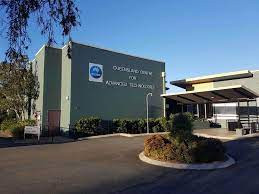

Abstracts and Presentation Slides can be downloaded here. (ID/Password is required. Only Participants and IERE members)
Items not yet posted will be uploaded as they become available.
| Keynote | » Abstracts | » Presentation Slides |
|---|---|---|
| Session 1 | » Abstracts | » Presentation Slides |
| Session 2 | » Abstracts | » Presentation Slides |
| Session 3 | » Abstracts | » Presentation Slides |
| Session 4 | » Abstracts | » Presentation Slides |
Monday, May 22, 2023
Tuesday, May 23, 2023
2023 IERE-CSIRO Brisbane Hydrogen Workshop (Day 1)
Wednesday, May 24, 2023
2023 IERE-CSIRO Brisbane Hydrogen Workshop (Day 2)
Thursday, May 25, 2023
Technical Visit (optional)
- Visiting CSIRO Queensland Centre for Advanced Technologies (QCAT)
Social Event (Optional)
- Visiting Lone Pine Koala Sanctuary and Lunch
Session structure and speakers may be subject to change according to the submission of contributions.
| Opening Address | MINO Yoshiaki (IERE Chair) |
|---|---|
| Welcome Address | David HARRIS (CSIRO, Australia) |
| Keynote Speech | MITSUSHIMA Shigenori (Professor, Yokohama National University, Japan) Hydrogen energy systems based on renewable electricity and its fundamental research |
| Ian MACKINNON (Professor, Queensland University of Technology, Australia) Hydrogen transition: opportunities for step change in energy efficiency of national and regional infrastructure |
|
| Patrick LAVERY (Contributor, International Flame Research Foundation, England) Use of hydrogen in European industry - challenges and progress - a summary of IFRF TOTeM 48 |
| Session 1 Hydrogen Supply |
As hydrogen is an integral part of the transition to clean energy, the reliable supply of hydrogen at scale required to support this transition is critical. The hydrogen supply chain should address not only the scale issues, but also should be sustainable (with low carbon footprint) and commercially affordable. This session will address the topics related to ensuring the hydrogen supply for clean energy transition. Potential topics include:
(Part 1)
(Part 2)
|
|---|---|
| Session 2 Theme: Hydrogen Storage and Distribution |
Establishing large-scale hydrogen energy value chains depends on the cost and efficiency of hydrogen storage and transport. This session will explore technological solutions for storage of hydrogen at various scales and applications, such as for grid stabilisation, seasonal energy storage, or long-distance transportation. Potential topics include:
|
| Session 3 Theme: Cross-Cutting Areas |
Emerging of hydrogen industry also results in several questions to be addressed to support this industry. Understanding the environmental impact of large-scale hydrogen production and transport, as well as ensuring that this new industry will have a social acceptance is very important for the deployment of hydrogen-base technologies. The appropriate policies and regulations, as well as safety standards and certification processes will ensure the smooth transition. It also requires good understanding of the socio-technical risks and techno-economic evaluation of various options. Potential topics include:
|
|---|---|
| Session 4 Theme: Hydrogen Utilization |
A feature of the emergence of hydrogen energy systems is the diversity of potential application pathways and industrial sectors. Commonly described as ŌĆśPower-to-XŌĆÖ, there are also opportunities for industrial sectors not traditionally associated with hydrogen to play a role in production (such as the waste sector) or utilization for decarbonization (such as agriculture). This session will explore the different ways that various industry sectors can come together to both support ŌĆśhydrogen at scaleŌĆÖ as well as decarbonization of industries such as metals production. Potential topics include:
(Part 1)
(Part 2)
|
| Theme: Relevance of Hydrogen R&D to the Real World |
|
|---|
TAKEI Katsuhito (Secretary General, IERE) |
Nikolai KINAEV (Leader-Hydrogen Future Science Platform, CSIRO, Australia) |
|
TAKEI Katsuhito (Secretary General, IERE) |
CSIRO QCAT, Pullenvale, Queensland
The Queensland Centre for Advanced Technologies is a collaboration between the Commonwealth Scientific and Industrial Research Organisation (CSIRO) and the State Government of Queensland. The establishment of the Centre flows from an agreement between the Australian and Queensland Governments in 1990 to expand and diversify the research and development activities undertaken by CSIRO in Queensland. The Centre commenced operation in 1992 and was officially opened in 1993. Following the construction of new facilities, Stage Two was opened in 2000.
QCAT is a world class research and development precinct recognised for the excellence of its contribution to the mining, energy and manufacturing industries. Our mission is to generate products and processes of high value to AustraliaŌĆÖs mineral, energy resources, and manufacturing industries with particular focus on those resources and industries located in Queensland. Today, QCAT is home to over 400 researchers.
Queensland Centre for Advanced Technologies

Lone Pine Koala Sanctuary
Lone Pine Koala Sanctuary is the worldŌĆÖs first and largest koala sanctuary, home to over 100 koalas and 70 species of other Australian native animals.
As Brisbane's premier wildlife attraction, Lone Pine is the perfect place to get up close and personal with Australia's furry, feathery, and scaly friends in a natural, intimate setting.
With a daily schedule full of shows, presentations, photo opportunities and free-range kangaroo feeding, there is something for guests of all ages.
Don't miss the new 360-degree crocodile viewing dome, where you can come face to face (or tooth to tooth!) with Australia's largest apex predator, the saltwater crocodile!
Lone Pine Koala Sanctuary is accredited by the Zoo and Aquarium Association for positive animal welfare. The health and wellbeing of the sanctuaryŌĆÖs animals are at the forefront of everything they do, along with their extensive research and conservation efforts.
Lone Pine is open every day from 9 am-5 pm and just 12 kilometres from Brisbane CBD. The sanctuary can be accessed by car, bus, or Mirimar River Cruise.
